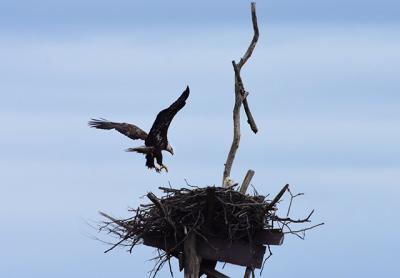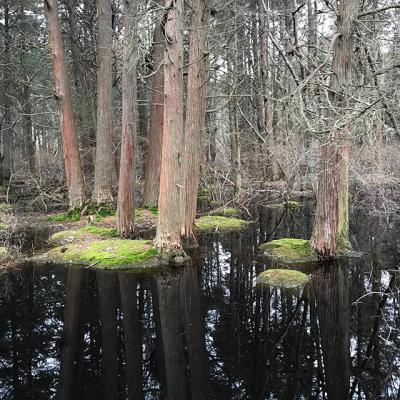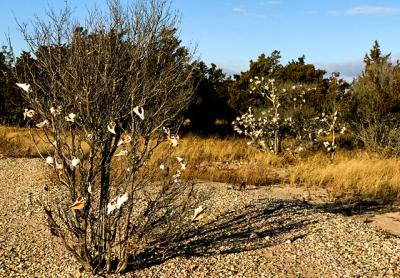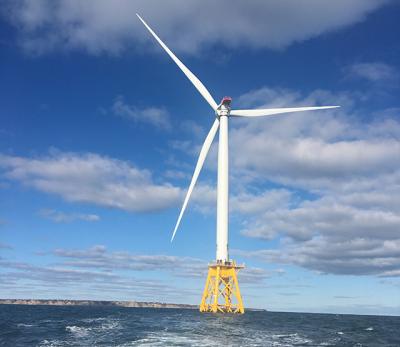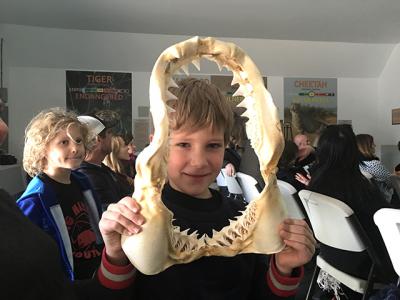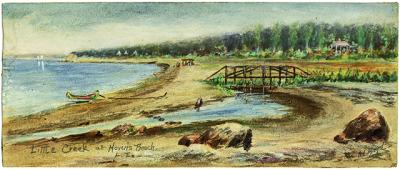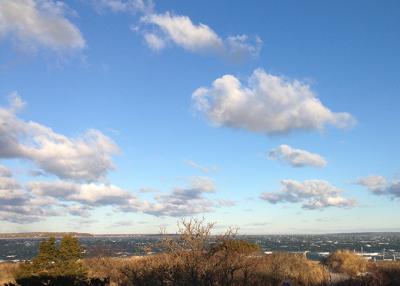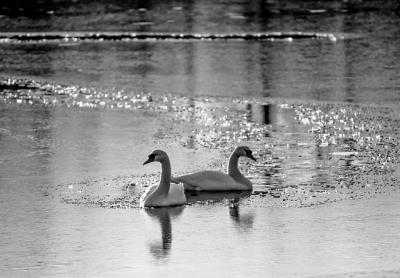Nature Notes: Signs of Spring
Nature Notes: Signs of Spring
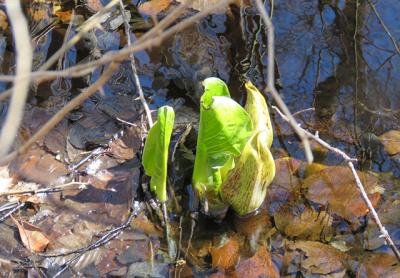
Birds continue to return north. Jane Bimson sent me a nice shot of an osprey perched in a tree at the edge of Fort Pond. Karen Rubinstein, who has overseen the Montauk Christmas Count for the past two years, and lives with her sister on Accabonac Harbor, reported that a pair of fish crows arrived and she observed an oystercatcher at Louse Point. She still has a pine siskin at her feeder that has yet to go north.
I went to observe an overfilled wetland pond in south Bridgehampton last Thursday and was greeted by a rite-of-spring chorusing of 25 or so red-winged blackbirds ringing from the tops of the trees, while a duck quacked on and off and a robin looked for food on a lawn edging the pond. Once spring begins in earnest, there is no stopping it.
Plants are popping up here and there. While there was only one snowdrop plant at the wetland pond site two weeks ago, last Thursday there was a slew of them, some even popping up their pearly white flowers from underwater. One of the signs of early spring is the blooming of the skunk cabbages. Apparently their skunk-like odor — who could miss it — attracts early pollinators when competition for those flying insects is at a season low.
There are a few spots on the South Fork, all of them wet, where skunk cabbage patches cover a lot of ground. One is on both sides of Edge of Woods Road in Water Mill before it enters Majors Path, two others are on the north side of Millstone Brook Road in the Town of Southampton near where North Sea meets Tuckahoe. The largest ones I know of in East Hampton are the one on the west side of Barcelona near Little Northwest Creek, another in Sagg Swamp in Sagaponack, and in Montauk around Big Reed Pond. Jane Bimson was on hand to see the ones at Big Reed just coming into flower. Very often you will find Jack-in-the-Pulpit beginning to flower at the edge of the skunk cabbages.
As Long Island warms up along with the rest of the Northern Hemisphere, southern plants and southern birds begin to breed here. Several, including the mockingbird, cardinal, red-bellied woodpecker, and Carolina wren, have become established members of the Long Island avifauna since the late-1950s/early-1960s. Others, like the indigo bunting, blue grosbeak, and black vulture, are just beginning to establish here.
Montauk at the southern and eastern tip of Long Island is an area where southern plant species establish first because its seasonal temperatures are
milder than the rest of Long Island’s. Its southern red oak population continues to thrive.
So-called global warming resulting in the subsequent melting of northern and southern glaciers such as those on Greenland, Iceland, Alaska, and Antarctica has been going on since the last glaciation and began to melt away from Long Island about 15,000 years ago. But there was a time after the very major glaciation of 500 million years ago when five of the seven continents were still connected, forming a super-continent known as Gondwanaland.
Beginning some two-plus million years ago, and ending with the glacier that created Long Island, there have been at least four major glaciations and retreats. After each retreat, the Northern Hemisphere warmed up to the point where the evergreen Podocarpus and many other tropical plants thrived and north-south bird migrations got going. Sea level was much higher during those glaciations. What are now Long Island and New York City were well under water. A similar post-glacial sea rise is now in progress, but it has a very long way to go before it tops the previous records.
Proto-humans and modern humans haven’t been around nearly that long, and so it will be interesting to see what happens to all those postmodern-era coliseums and monuments, built recently or still on the drawing board, such as those in Dubai, Shanghai, Mecca, Hong Kong, Malaysia, and our own New York City. Golly, Hudson Yards could become half submerged. Maybe Bezos and Amazon know something we don’t.
Larry Penny can be reached via email at [email protected].

